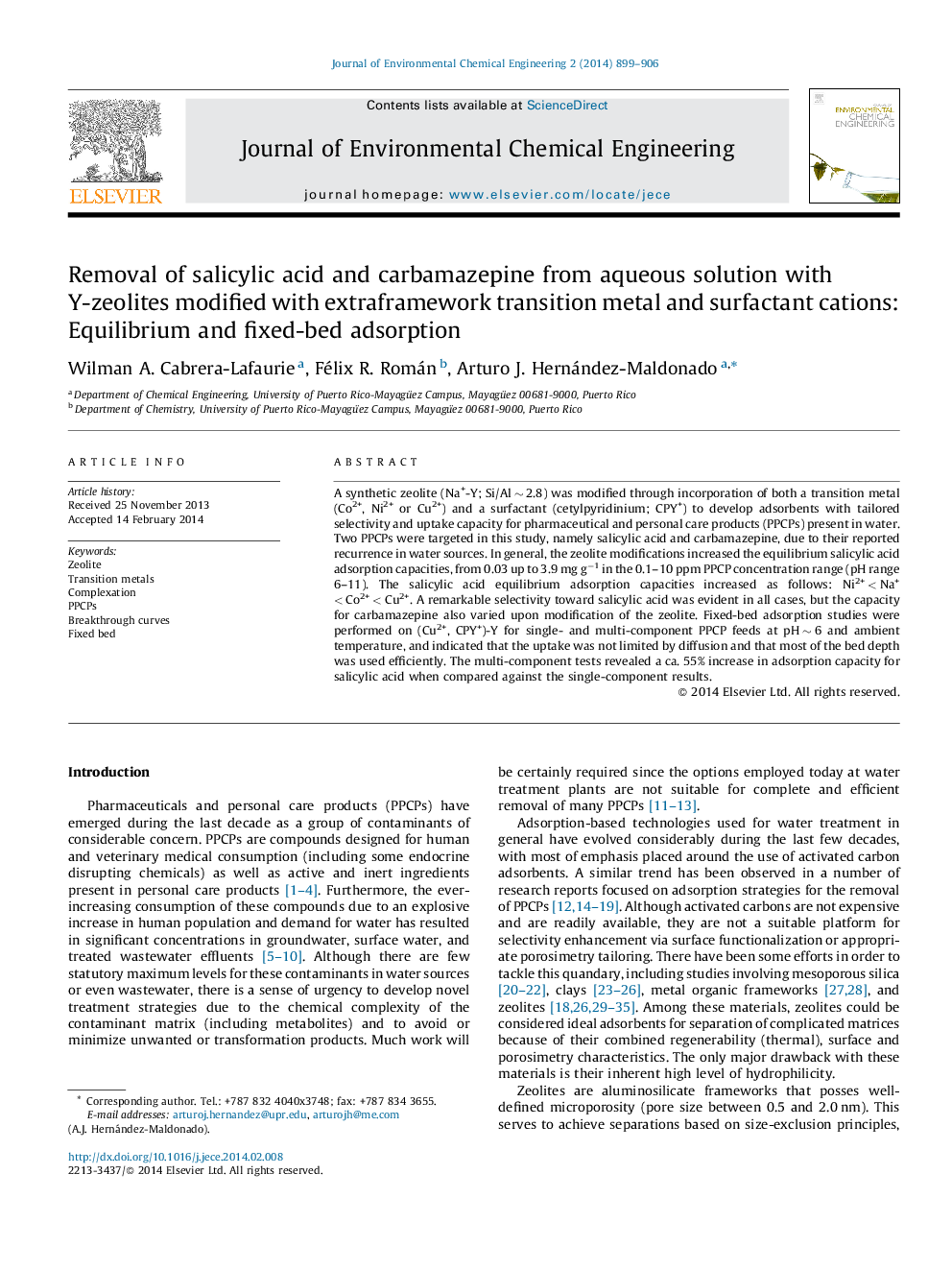| Article ID | Journal | Published Year | Pages | File Type |
|---|---|---|---|---|
| 221752 | Journal of Environmental Chemical Engineering | 2014 | 8 Pages |
•Zeolites modified with Co2+, Ni2+ or Cu2+ and surfactant for adsorption of PPCPs.•Adsorption influenced by the type of modification and initial solution pH.•Combination of Cu2+ and surfactant resulted in larger salicylic acid uptakes.•Multi-component adsorption revealed remarkable selectivity toward salicylic acid.
A synthetic zeolite (Na+-Y; Si/Al ∼ 2.8) was modified through incorporation of both a transition metal (Co2+, Ni2+ or Cu2+) and a surfactant (cetylpyridinium; CPY+) to develop adsorbents with tailored selectivity and uptake capacity for pharmaceutical and personal care products (PPCPs) present in water. Two PPCPs were targeted in this study, namely salicylic acid and carbamazepine, due to their reported recurrence in water sources. In general, the zeolite modifications increased the equilibrium salicylic acid adsorption capacities, from 0.03 up to 3.9 mg g−1 in the 0.1–10 ppm PPCP concentration range (pH range 6–11). The salicylic acid equilibrium adsorption capacities increased as follows: Ni2+ < Na+ < Co2+ < Cu2+. A remarkable selectivity toward salicylic acid was evident in all cases, but the capacity for carbamazepine also varied upon modification of the zeolite. Fixed-bed adsorption studies were performed on (Cu2+, CPY+)-Y for single- and multi-component PPCP feeds at pH ∼ 6 and ambient temperature, and indicated that the uptake was not limited by diffusion and that most of the bed depth was used efficiently. The multi-component tests revealed a ca. 55% increase in adsorption capacity for salicylic acid when compared against the single-component results.
Graphical abstractFigure optionsDownload full-size imageDownload as PowerPoint slide
